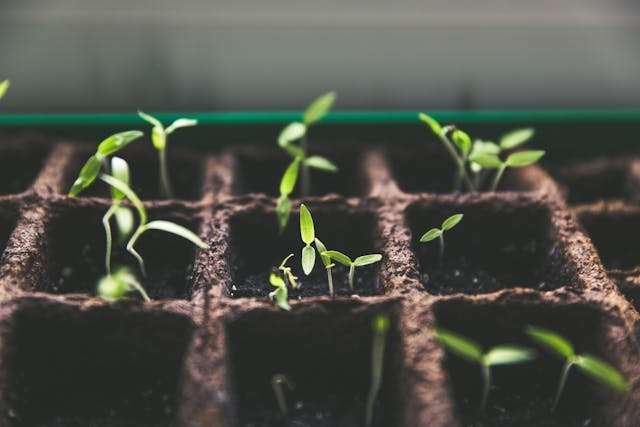Welcome to the intricate world of horticulture, where more is happening than meets the eye. Plants in a garden communicate through a network of signals, whispering secrets about environmental conditions and threats. This biological conversation is imperative for their survival and growth. Harnessing this natural dialogue is the essence of companion planting, a method that enriches and protects your garden by thoughtfully placing plants together. This post explores how greenery interacts and explores companion planting techniques designed to enhance biodiversity and productivity. By understanding and implementing these strategies, gardeners can create more resilient and flourishing ecosystems right in their backyards.
The Science of Plant Communication
Plants possess a sophisticated communication system that is pivotal to their survival and growth. They can convey vital information to their neighbors through a complex network of chemical, hormonal, and physical signals transmitted through the air and soil. For instance, when under attack by pests, tomatoes and corn release volatile organic compounds. These compounds serve as distress signals that alert nearby vegetation to bolster their chemical defenses.
They can even attract beneficial insects that act as natural pest control as they respond to immediate threats and adapt to longer-term changes in their environment. This ongoing conversation forms the foundation of an integrated and healthy ecosystem. Understanding and leveraging these natural communications in our gardens can enhance their health and resilience, leading to more robust and sustainable horticulture practices.

Understanding Companion Planting
Companion planting techniques are a time-honored gardening practice that pairs vegetables for mutual benefit. It goes beyond traditional horticulture by utilizing the natural capabilities of plants to support one another. Benefits include natural pest control, as some release substances that repel pests while attracting pollinators. Improved pollination often results in higher yields of fruits and vegetables.
Additionally, companion planting efficiently uses space, as taller plants provide shade for sun-sensitive, shorter ones. An example of an effective companion planting is the combination of carrots and onions; onions deter the carrot fly, which is attracted to carrots, thereby reducing pest infestations without the use of chemical insecticides.
The Role of Mycorrhizal Networks
Mycorrhizal networks, often referred to as the “Wood Wide Web,” play a crucial role in communication and nutrient-sharing, making them a fundamental component of these strategies. These networks are formed by fungi that connect the roots of different plants, allowing them to exchange nutrients and chemical signals that can enhance their health and growth.
For example, in a companion planted garden, mycorrhizal fungi can help distribute water and nutrients from a deeply-rooted plant to a shallower-rooted one, optimizing resource use and improving drought resistance. Fostering these symbiotic relationships helps gardeners greatly enhance the overall productivity and stability of their green ecosystems. This understanding adds another layer to the strategic planning of a companion garden, emphasizing the importance of soil health and microbial life in achieving a thriving ecosystem.
How to Plan Your Garden
Effective companion planting begins with understanding the growth habits and needs of your various greenery. Consider their height, nutrient needs, and shade tolerance to maximize the beneficial interactions. Tall sunflowers can provide shade for lower-growing, sun-sensitive species like lettuce.
Creating a chart of compatible plants can be immensely helpful. This chart should include information on which ones are companions and which ones are antagonists to avoid negative interactions. Start with a few simple pairings and observe how they affect your garden’s health and yield. This planned approach can transform your gardening experience, turning it into a dynamic interplay of growth and mutual support.

Implementing Companion Planting Techniques
To successfully implement companion planting, prepare the soil according to the needs of your chosen plant combinations. Proper spacing is critical to ensure that each one has enough room to grow without competing for resources. Consider timing your plantings to coordinate their peak growth periods for optimal compatibility.
For example, putting garlic near roses can help deter pests that typically target roses, such as aphids, while the roses provide structured climbing support for the garlic vines. Regular observation and maintenance of your garden are crucial as they allow you to adjust your companion planting strategies based on real-time growth and interaction. This hands-on approach enhances health and deepens your connection with your garden.

Advanced Techniques and Strategies
For those looking to expand their gardening techniques, advanced strategies like intercropping and rotational planting can offer significant benefits. Intercropping involves putting two crops in close proximity for pest control, pollination, and resource utilization, effectively increasing crop productivity. Rotational companion planting involves changing the plants in a given area each season to optimize the benefits of companion planting over time.
These methods require careful planning and a bit more experience but can dramatically improve soil health and garden vitality. Adapting these strategies to specific local conditions—such as climate and soil type—can further enhance their effectiveness. This can make your garden a model of sustainability and productivity.
In Conclusion
Exploring the intricate realm of plant communication and integrating companion planting techniques can transform gardening from a solitary activity into a vibrant, interactive experience. By utilizing these methods, you can promote a healthier environment that is less reliant on chemical pesticides and fertilizers. This fosters a more sustainable approach to horticulture. Experimenting with different combinations can lead to a deeper understanding of the ecological relationships in your garden. Through this, you can highlight the benefits of biodiversity. As you witness the positive changes and increased yield in your garden, share your experiences to inspire others to embrace these environmentally friendly practices.
Author Bio: Emma Clarkson is a seasoned horticulturist with a deep passion for sustainable practices and the intricate world of plant communication. She began her career at Relosmart Movers, an international moving company, where she worked on implementing the use of responsibly sourced packing material from sustainable softwood plantations. These packing materials are also now reused and recycled. Eventually, Emma’s growing fascination with horticulture led her to pursue gardening full-time, allowing her to combine her logistics expertise with her love for greenery.
Photo Credits:
Featured Image
Seedlings
Big Yellow Sunflower
Red Rose
